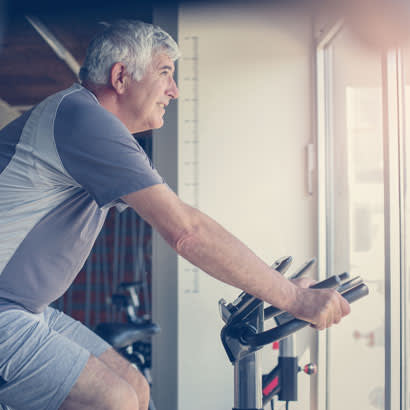
Many communities across the country have already been impacted in some way by the novel Coronavirus Disease 2019 (COVID-19), and many park and recreation agencies have had to make decisions about suspending their programs and services or closing their community and senior centers — or they are considering doing so in the near future. This decision is certainly not a light one, given that many of the most vulnerable patrons served — including older adults, who are at an increased risk of becoming ill and experiencing complications if exposed to COVID-19 — depend on these programs and services to improve their health and maintain their independence.
According to the Centers for Disease Control and Prevention (CDC), adults — particularly those 60 years and older — with underlying health issues are at an increased risk of becoming very sick from this illness. Although your facilities may already be closed or will close soon, you can still support the older adult population in your community by calming their concerns and fears and letting them know ways they can remain healthy during this time. As of March 16, to reduce the risk of exposure and illness, the CDC recommends that older adults :
Take everyday precautions and practice social distancing
- Stay home as much as possible
- When in public, keep at least six feet away from others, especially if they are sick
- Clean and wash hands often especially after blowing your nose, sneezing, coughing or having been in a public place
- Avoid poorly ventilated areas and crowds as much as possible, including large gatherings, cruise travel and non-essential air travel
- Clean and disinfect the home to remove germs and frequently clean high-touch surfaces in the home (e.g. doorknobs, light switches, faucets and sinks)
- Avoid touching the face, nose and eyes, and high-touch surfaces in public spaces (e.g. elevator buttons, handrails, etc.)
- Only seek advice from trusted sources including local public health agencies and the CDC, and stay informed about what is happening in the community
Stock up on supplies and have a contingency plan
- Obtain extra prescribed medications, over-the-counter medications and medical supplies to last several weeks
- Have enough household items and groceries in the home
- Make a plan for what to do in the event of illness and identify a potential caregiver
In addition, as trusted community-based service providers, park and recreation professionals can educate older adults on ways they can still continue to be physically active and socially connected while avoiding congregate settings. Encourage them to stay connected with their family members and friends via technology platforms where possible and engage in at-home exercises, whether it be through home equipment, exercise videos or informal exercises (e.g. walking back and forth to the kitchen or other rooms in the house, moving arms and legs frequently, meditation, gentle stretches and strengthening exercises).
Given that many community and senior centers serve as congregate meal sites or facilitate the delivery of meals to home-bound older adults, it is important to assess whether it is still possible to continue providing these essential meals. Many states have ordered the closure of senior centers but are still prepared to offer essential services such as meals and transportation. Like the Newport 60+ Activity Center in Oregon, many agencies may have seen a sharp decline in the number of volunteers to efficiently run meal programs, and have modified meal service to “grab and go” meals available for pick-up for congregate diners and are delivering meals for several days for those who are home-bound. Questions that many park and recreation agencies are facing when it comes to serving meals to older adults include:
- Is it still possible to offer the meal in a congregate setting while adhering to CDC’s social distancing recommendations?
- Can service be modified to “drive-thru” or “grab and go”?
- Can meals be delivered to those who typically participate in the congregate setting?
- Is there funding and vendor capacity to increase shelf-stable and frozen meals?
- How many meals should be delivered at a time in efforts to reduce the number of trips and limit potential exposure?
- How do we navigate the increasing demand and dwindling staff capacity?
- What precautions will volunteers take since many volunteers are typically also older adults and drivers of home-delivered meals, sometimes entering the home during meal drop-off?
At the federal level, government officials are working on the Families First Coronavirus Response Act-H.R. 6201 that will respond to the COVID-19 outbreak by expanding appropriations to the Department of Health and Human Services for nutrition programs that assist older adults and appropriations to the Department of Agriculture (USDA) for expanded food assistance, such as the Emergency Food Assistance Program (TEFAP) and nutrition assistance grants, as well as allowing states to request waivers to provide emergency Supplemental Nutrition Assistance Program (SNAP) benefits, among other nutrition assistance. At the state level, State Units on Aging are also working to provide guidance so that this very critical and essential service is not significantly interrupted.
As this is an evolving issue and different communities are reacting in different ways, let me know how your agency is preparing for and navigating through the cancellation of older adult programs and services.
Please also continue to coordinate with local public health officials and follow the most recent CDC recommendations as they become available.
For more information about NRPA’s response to COVID-19, as well as available resources for park and recreation professionals, please see our Coronavirus Disease 2019 (COVID-19) webpage.
Lesha Spencer-Brown, MPH, CPH, is an NRPA Senior Program Manager.


